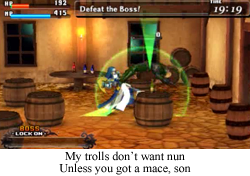 This is a videogame blog, but not a videogame website. Why do I make that distinction? Because, if you’ve noticed, in 200 or so entries about videogames, I have barely ever even referenced “videogame strategy”. I might write a quick aside regarding the Konami Code or “boy, is this game hard”, but I’m not so much into telling my loyal readers exactly how to defeat the boss of world five (Clawgrip?). With the exception of articles where I’m examining the gameplay for the sake of the gameplay (like when toads or giant robots are involved), I save strategy discussions for the other guys, and stick to the artsy fartsy nonsense you can expect from Gogglebob.com.
This is a videogame blog, but not a videogame website. Why do I make that distinction? Because, if you’ve noticed, in 200 or so entries about videogames, I have barely ever even referenced “videogame strategy”. I might write a quick aside regarding the Konami Code or “boy, is this game hard”, but I’m not so much into telling my loyal readers exactly how to defeat the boss of world five (Clawgrip?). With the exception of articles where I’m examining the gameplay for the sake of the gameplay (like when toads or giant robots are involved), I save strategy discussions for the other guys, and stick to the artsy fartsy nonsense you can expect from Gogglebob.com.
But why? Why do I avoid videogame strategy discussion in my blog? Well, the answer is simple: I don’t think I’m good at videogames.
I’ve mentioned it before, but I play videogames to relax. Yes, that might seem kind of ridiculous when you consider that I’ve been writing complete essays about every old school game I’ve played for the last year or so (a feat that would have made my high school self weep with anger at an uncaring world that made videogames homework), but, when you get right down to it, I play videogames to not think. As a result, in fighting games I have a tendency to “main” the most powerful but least combo-heavy character, in action games I find the most destructive attack and never deviate, and in JRPGs I often discover some way to min/max early, so as to never have to think again. Now, I’m not a complete Neanderthal when it comes to gaming; if I like a game, I often revisit it and “play for real” with stimulating setups and innovative job finagling (most Final Fantasy games get a replay with this in mind), but, nine times out of ten, how I play is, “Wow, the Fire Rod is really powerful and kills everything in a few hits… I better never use anything else ever again!”
 As a result, despite the sheer number of games I’ve beaten, I often feel like I’m not really “playing right”. I have this mental image of the rest of gamers out there (my readers included) as delicate maids, carefully dusting and vacuuming and flipping the mattress every week after properly washing the sheets. Me? I spray Febreze on the smelly bits, hope I remembered to empty the Roomba, and pray any company that might unexpectedly arrive has no problem with the fact that my couch might best be described as “crunchy”. Yes, my videogame skills are passable, but Pokémon got EVs, Street Fighters got aerial combos, and Sonic the Hedgehog has something called “S Rank”. What could “S” even stand for? Doesn’t matter, I’ll never see such a thing.
As a result, despite the sheer number of games I’ve beaten, I often feel like I’m not really “playing right”. I have this mental image of the rest of gamers out there (my readers included) as delicate maids, carefully dusting and vacuuming and flipping the mattress every week after properly washing the sheets. Me? I spray Febreze on the smelly bits, hope I remembered to empty the Roomba, and pray any company that might unexpectedly arrive has no problem with the fact that my couch might best be described as “crunchy”. Yes, my videogame skills are passable, but Pokémon got EVs, Street Fighters got aerial combos, and Sonic the Hedgehog has something called “S Rank”. What could “S” even stand for? Doesn’t matter, I’ll never see such a thing.
But I do know how to beat Code of Princess, so I may as well share such valuable information.
Code of Princess is, essentially, a beat ‘em up. Okay, no doubt about it, it is a beat ‘em up, but it has one very distinct mutation in the formula that almost drops CoP into another genre. Code of Princess is a beat ‘em up that is almost entirely 2-D. Your hero (usually a princess) is pretty much stuck on one plane of existence, and “moving up and down” is right out. As a result, this beat ‘em up feels even more limited than most games where you beat up the same guy over and over again. But! CoP recovers gracefully with an eclectic cast of enemies and combatants that would even put a D&D Monster Manual to shame. There are goblins, and, like, bigger goblins? They’re totally different creatures. Oh, and there’s a dragon! Sometimes two! You’re always going to have a good time when you punch a dragon.
But the other significant thing that separates Code of Princess from its Final Fighting contemporaries is the pretty robust RPG-esque system involved. Like in your typical JRPG (also a series of games where you fight dragons), your four-person party has access to a gigantic collection of equipment and items, and your heroes level up. While the equipment is pretty straightforward (+2 sword is better than +1 sword… I think), the leveling system can seem pretty overwhelming, as every level up offers bonus points, and those points may be redeemed for increases in any one of six stats. Given the length of the bars involved, it seems like these stats may be embiggened from zero to something in the department of twelve billion, so the choice of what to increase is likely a difficult one for many new players.
So here’s the Goggle Bob official Code of Princess strategy: don’t worry about it, you’re here to hit things.
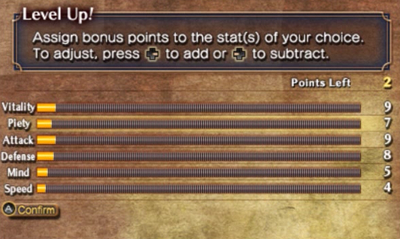
There are six different stats that may be increased. Let’s look at those. Speed is likely to catch your eye, but ignore it. This is an action game, and, unless you’re playing as Earl, you’re already fast enough to get around the screen and dodge attacks. If you weren’t, this would be a pretty lousy game, and no amount of pumping up that stat will eventually turn you into a teleporting monster. Then we’ve got Defense and Mind. Oh, this is one of those games where there’s a DEF and MDEF stat? Screw that noise. If you think you need to live longer to survive the battlefield, just pump those points into Vitality, the HP stat. That covers both bases, so if you encounter a magical or physical-based boss, you don’t have anything to worry about. Finally, there is Piety and Attack. Piety influences your magic attack, but magic is a consumable resource. You can run out of magic, and, even though it will eventually refill, what are you going to do if you’re facing the Black Knight, and you’ve got to wait for a recharge? Gesture rudely? Where’s your piety now? No, you want to pour all those points into Attack, because you can always swing your weapon around like a lunatic, and there’s no MP gauge for wholesale whacking.
So what have we learned? Put all those level up points into Vit and Attack, and call it a day.
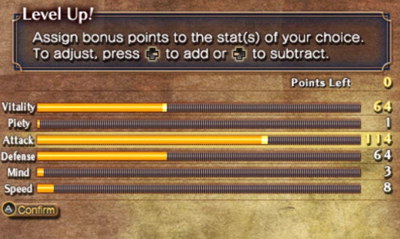
I got confused and added a little extra defense.
And this technique applies to other games, too! Look at any action game with level up choices, and then analyze what you “need” to win. Is this a game where there’s a regular attack and a limited special attack? Well, focus on that regular attack, because, unlike real life, in 90% of videogames, you don’t have to account for contingency plans. Yes, you might imagine there’s some world where you’ll eventually need your speed, magic attack, or charisma stat to do something, but, nope, nearly every videogame out there wants you to eventually win, and will not throw up an insurmountable brick wall because you didn’t acknowledge your piety. And, with the exception of a few WRPGs, attacking is the only way your digital avatar knows how to interact with his/her world, so screw everything else, it’s time to become the best swordsperson in the universe. Those increased murder stats might not be so useful once peacetime comes, but this ain’t Harvest Moon.
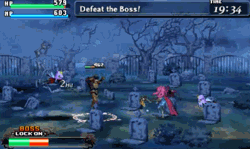 So the next time you’re faced with a choice in a videogame (and especially Code of Princess), stick to the bruiser path. You’ll find it’s the easiest way. It’s certainly the Goggle Bob way.
So the next time you’re faced with a choice in a videogame (and especially Code of Princess), stick to the bruiser path. You’ll find it’s the easiest way. It’s certainly the Goggle Bob way.
FGC #216 Code of Princess
- System: 3DS, and then, mysteriously, a PC version. Guess that makes it a lot more likely to get some multiplayer going.
- Number of players: Four? Two? I don’t know. I think it’s four, but I’ll probably have to get that PC version to score even a second player.
- Rated T for Teen: This is somehow the second beat ‘em up with scantily clad heroines I’ve reviewed in recent memory. Code of Princess is slightly less overt about it than Dragon’s Crown… Well, assuming you ignore the fact that our princess is wearing the ol’ battle bikini. Necromancer Zozo is also pretty underdressed, but she’s supposed to be a literal walking corpse, so I think that only appeals to a distinct subset of viewers.
- Tell me a story: Code of Princess appears to take place in a typical medieval magical land. However, it is eventually revealed that “our society” grew too decadent, so the gods introduced magic and monsters to the world to throw humanity off its ozone destroying ass. At the finale of the story, Princess Solange has the choice of destroying all magic (and potentially dooming humanity to the Information Age again), or letting it fester so an unstoppable evil can be reborn in a millennia or so. I’m guessing the canon is that she destroyed all magic, because Solange’s piety stat is atrocious.
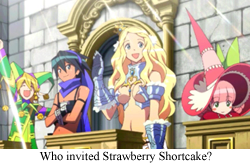 Favorite Character: I rarely go straight for the title character, but Solange Blanchefleur de Lux’s preference for giant swords captured my heart. The sword is called DeLuxcalibur? That’s neat, now keep hitting things until they fall down.
Favorite Character: I rarely go straight for the title character, but Solange Blanchefleur de Lux’s preference for giant swords captured my heart. The sword is called DeLuxcalibur? That’s neat, now keep hitting things until they fall down.- Have a laugh: I also have to note that Code of Princess is a generally “funny” game. The voice acting is a big factor here, and I’m really quite glad for its English dub. Yes, some of the characters are annoying, but it’s all worth it for Zozo’s deadpan delivery of… everything.
- Did you know? Like a certain other famous beat ‘em up, you can eventually unlock a playable version of practically every character in the game. Playing as the dragon sounds pretty impressive, but walking vegetables are available if that’s more your speed.
- Would I play again: Probably not, unfortunately. I like this game, but its gameplay seems kind of limited, and I’m not going to spend all day trying to make the numbers go up on that battle nun until she’s a viable character. I’d certainly pick up Code of Princess 2, but until that’s available, I’ll probably play something else.
What’s next? Random ROB has chosen… Adventure Time: Explore the Dungeon Because I Don’t Know! Why? Well, because… Oh, you get the idea. Please look forward to it!
